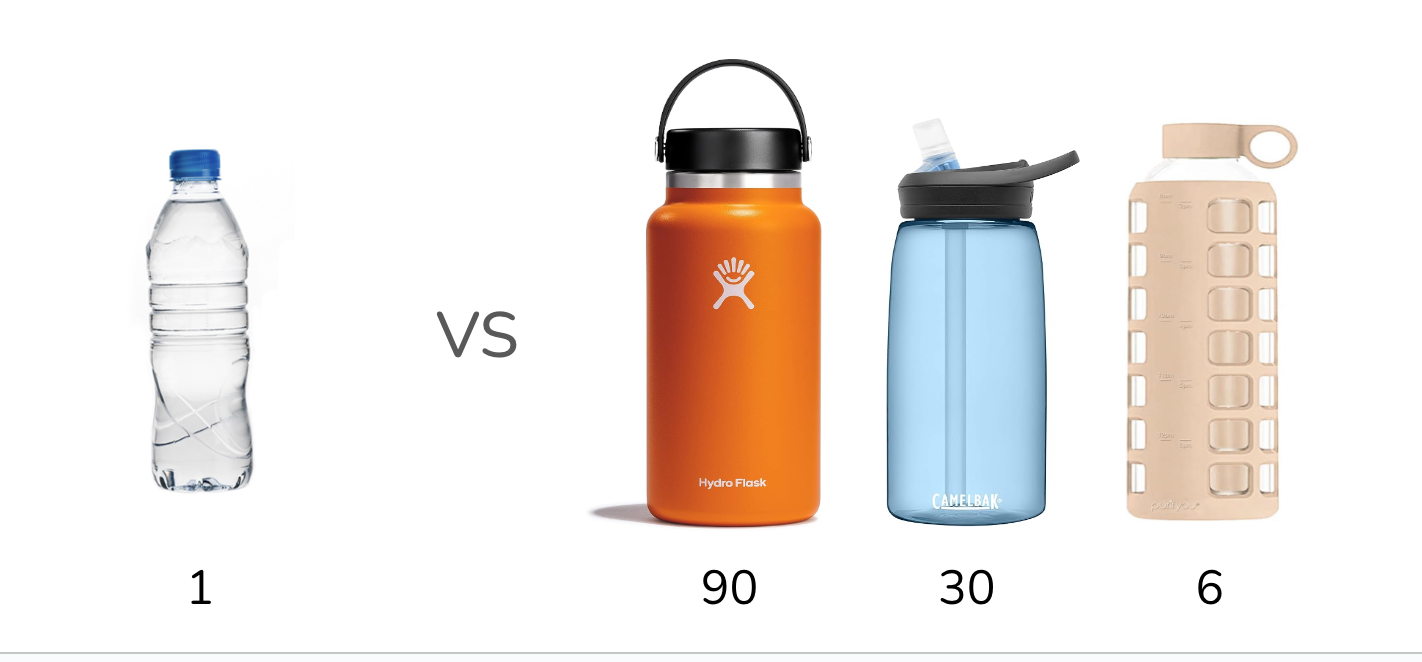How does the number of times I use a water bottle change its environmental impact?
Video Highlights: Understanding the Environmental Impact of Water Bottles: A Deep Dive into Reusables vs. Single-Use
Introduction
In this video I dive into the environmental impacts of water bottles, focusing on the comparison between reusable and single-use bottles. I explore several key factors that influence their overall environmental footprint, such as global warming potential, production costs, and usage patterns.
Main Points of the Video
- The Impact of Reusability (00:00 – 00:30)
- I explain how the number of times a reusable water bottle is used significantly reduces its global warming potential and environmental impact. This aspect is crucial in understanding the sustainability of water bottles.
- Breakeven Point of Reusables vs. Single-Use (00:30 – 01:00)
- The concept of the ‘breakeven point’ is critical. This is the number of uses a reusable bottle needs to surpass to become more eco-friendly than a single-use bottle.
- Production Phase and Its Impact (01:00 – 01:30)
- I highlight that the production phase of water bottles, whether single-use or reusable, contributes significantly to their environmental impact. This phase includes the resources used, manufacturing, packaging, and delivery.
- Lifecycle Analysis of Water Bottles (01:30 – 02:00)
- The lifecycle analysis of water bottles is broken down into three main phases: production, use, and post-use (or disposal). Each phase has a varying impact on the bottle’s overall environmental footprint.
- Global Warming Potential of Different Materials (02:00 – 02:30)
- I discuss how different materials (glass, aluminum, plastic, steel) used in water bottles have distinct global warming potentials and environmental impacts, which change with the frequency of use.
- Practical Implications and Consumer Choices (02:30 – 03:00)
- I emphasize the practical implications of these findings for consumers. Choosing to reuse a water bottle, whether it’s a specifically designed reusable or even a single-use bottle, can significantly reduce environmental impact.

